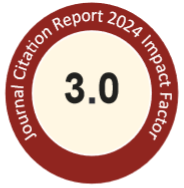Abstract
Depression and anxiety often co-occur with cardiac diseases. The Shexiang Baoxin pill (SBP) is a proprietary Chinese medicine initially used to treat cardiac conditions. This study explored whether SBP has antidepressant and anxiolytic effects in addition to hormonal and psychotropic mechanisms. Mice underwent 6 weeks of chronic unpredictable mild stress (CUMS) to induce depression- and anxiety-like behavior. During the 6-week experiment, mice received SBP at intragastric doses of 20.25 mg/kg or 40.5 mg/kg daily. Animals were then tested for depression in sucrose preference, forced-swimming, and tail suspension paradigms, and for anxiety in open field and elevated plus maze tests. Both SBP doses significantly reduced anhedonic behavior in the sucrose preference test; the high SBP dose also increased the number of entries into the central zone of the open field. SBP-treated mice had markedly lower blood levels of corticotrophin-releasing hormone (CRH) and adrenocorticotropic hormone (ACTH) than stressed mice treated with vehicle. Either low- or high-dose SBP reversed stress-induced reductions of norepinephrine (NE) and dopamine (DA) metabolites and the expression levels of brain-derived neurotrophic factor (BDNF), nerve growth factor (NGF), and glial cell-derived neurotrophic factor (GDNF) in related brain regions. These results suggest that SBP could prevent and alleviate prolonged stress-induced anhedonia and anxiety in association with its suppression of the hypothalamic-pituitary-adrenal (HPA) axis hyperactivity, modulation of brain monoamine neurotransmitter metabolism and neurotrophins. SBP may be particularly suitable for the management of depressive and anxiety disorders in patients with cardiac conditions. © 2018
ScienceDirect Link
Recommended Citation
Zhou, X.-D.; Shi, D.-D.; and Zhang, Z.-J.
(2019)
"Antidepressant and anxiolytic effects of the proprietary Chinese medicine Shexiang Baoxin pill in mice with chronic unpredictable mild stress,"
Journal of Food and Drug Analysis: Vol. 27
:
Iss.
1
, Article 15.
Available at: https://doi.org/10.1016/j.jfda.2018.08.001
Creative Commons License

This work is licensed under a Creative Commons Attribution-Noncommercial-No Derivative Works 4.0 License.
Fulltext URL
https://www.sciencedirect.com/science/article/pii/S1021949818301248/pdfft?md5=3783e429c5b7daba0a57cbe789d94717&pid=1-s2.0-S1021949818301248-main.pdf
Included in
Food Science Commons, Medicinal Chemistry and Pharmaceutics Commons, Pharmacology Commons, Toxicology Commons


Abstract Image